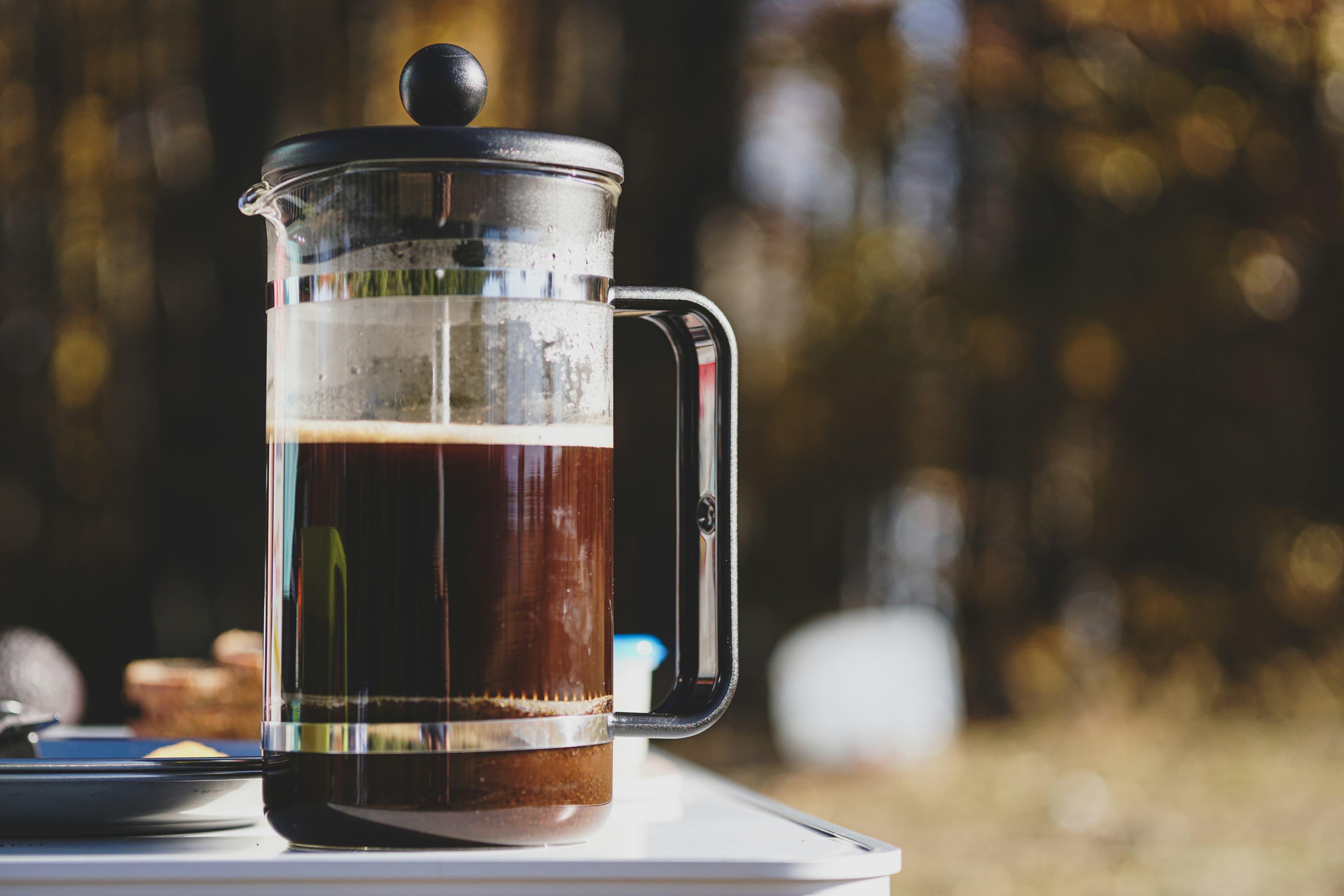The Beginner Guide to French Press

There’s something charmingly analog about the French press. No fancy filters, no intricate pouring patterns, no scales if you don’t feel like using one (though I still do). It’s just ground coffee, hot water, and a plunger—and yet somehow, when you get it right, it feels like magic in a mug. And it can be the perfect technique for when you're brewing for a small group of friends.
It’s especially well-suited to coffees with chocolate, nut, or caramel flavor profiles, though it can handle a variety of roasts. The immersion process allows water to extract flavors slowly and evenly, resulting in a dense, almost creamy texture that many find comforting and approachable.
Brewing with a French press doesn’t require advanced tools or expert-level timing. It’s a forgiving method, especially for those newer to specialty coffee or for anyone looking for a low-maintenance routine with high-reward results. However, like all great things, the details matter. Grind size, water temperature, and steep time all influence the final cup.
Of course, the French press has its quirks. If you grind too fine, you’ll get sludge. If you plunge too fast, you’ll stir up sediment. And if you leave the coffee sitting after it’s brewed, it’ll over-extract and turn bitter. But once you dial in the basics, it becomes second nature. It’s the kind of brew method you can do half-asleep on a rainy morning or serve proudly at brunch with friends.
I keep a french press on hand both for it's simple and beautiful design, and it's ability to create sharable volumes of coffee to share over breakfast with friends.
Here's a basic list of the equipment you'll need to make french press.
French Press - any size, typically 12–34 oz
Coffee Grinder - burr grinder recommended for consistent coarse grind
Kettle - standard or gooseneck, for boiling water
Spoon or Stirrer - non-metal preferred to avoid damaging the glass
Digital Scale - optional, but very helpful for precision
Timer - your phone will work perfectly
Here’s how I make it.
Grind the coffee – Use a burr grinder set to a coarse grind, about the size of breadcrumbs or kosher salt. Too fine, and you’ll get grit. For a standard 34 oz (1 liter) French press, use 55–60g of coffee (roughly 8–9 tablespoons). For a single cup (around 12 oz), go with 18–20g. If it's your first time brewing with your grinder, it might take some experimentation.
Boil your water – Heat water to just off the boil—around 200°F or 30 seconds after boiling if you’re eyeballing it. As your technique gets more advanced, temperature is something you can adjust based on the beans you're using.
Add coffee to the press – Drop your grounds into the bottom of the carafe. Give it a little shake to level them out.
Start the bloom – Pour about twice the weight of coffee in water (e.g., 40g of water if using 20g of coffee) to saturate the grounds. Wait 30 seconds, and give it a gentle stir to release trapped gases. You're looking for bubbles, and you can start to get the beautiful aroma of coffee
Fill it up – Pour the rest of the water slowly until you reach the limit line on your french press. Pop the lid on with the plunger pulled all the way up. Don't push down the plunger yet.
Let it steep – Set a timer for 4 minutes. You can go a little longer if you like a stronger cup, but don’t push past 6 minutes.
Plunge slowly – Press the plunger down gently with steady pressure. If it resists too much, your grind may be too fine.
Pour and enjoy – Serve immediately. Don’t let the coffee sit in the press—it’ll keep extracting and turn bitter. If you brewed extra, you may pour the remainder into a thermos or spare cup. You can also leave it in the carafe, though be aware that remaining coffee will continue to steep and become a much more aggressive flavor.
The French press offers a reliable, full-flavored brew with minimal effort. With the right technique, it produces a deeply satisfying cup that highlights the coffee’s body and richness—ideal for those who enjoy a bold, grounded experience in every sip.